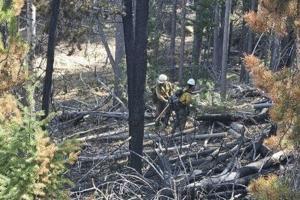The peregrine falcons nesting on the University of Pittsburgh’s Cathedral of Learning welcomed two new hatchlings Thursday. The first chick hatched around noon and the second emerged shortly after. A look at the National Aviary’s FalconCam showed mother Carla keeping the new chicks warm around 2 p.
m. Carla and her partner Ecco have been caring for their clutch of four eggs since March . The aviary announced the hatchlings on their website.

A spokesperson said the remaining two eggs could hatch within the next few days. “Round-the-clock care is needed from both parents during these early stages of chickhood,” the aviary said. “Viewers can expect to see Ecco bring food to the nest for Carla and his new offspring to dine on.
” Fans of the falcons can tune into the aviary’s livestream to see if the two remaining eggs hatch. Peregrine falcon chicks within a clutch typically hatch within a few days of each other, though it can be about a week between the first chick’s hatching and the last , according to the Alberta Conservation Association. For most of April, viewers saw Carla diligently incubating her eggs while Ecco primarily retrieved food for the pair.
Though the birds take turns keeping the eggs warm, the female takes the lead role in caring for the clutch. This year marks the second breeding season for the peregrine pair. Carla and Ecco laid four eggs in their nest in 2024, but only two chicks survived.
It was the first year the couple occupied the nest together, after Carla replaced Ecco’s previous partner Morela, who disappeared in 2023. Once each chick has hatched, they will spend about six weeks with their parents in the nest before they fledge and eventually find territories of their own. Before then, the state game commission is expected to band the chicks so they can be monitored throughout their lives.
“The banding is such an important part of the young falcons’ journey as it directly supports the ongoing statewide effort to monitor their species, whose populations were once in great decline,” said Robert Mulvihill, National Aviary ornithologist. The falcon couple will next care for their chicks with regular feedings and brooding — the behavior of a parent sitting on a chick to keep them warm while they can’t regulate their own body temperature. The chicks will likely learn to fly at the end of summer.
.
Health

Two peregrine falcon chicks hatch atop Pitt’s Cathedral of Learning

The peregrine falcons nesting on the University of Pittsburgh's Cathedral of Learning welcomed two new hatchlings Thursday. Two eggs remain to be hatched in the clutch that was laid last month.















